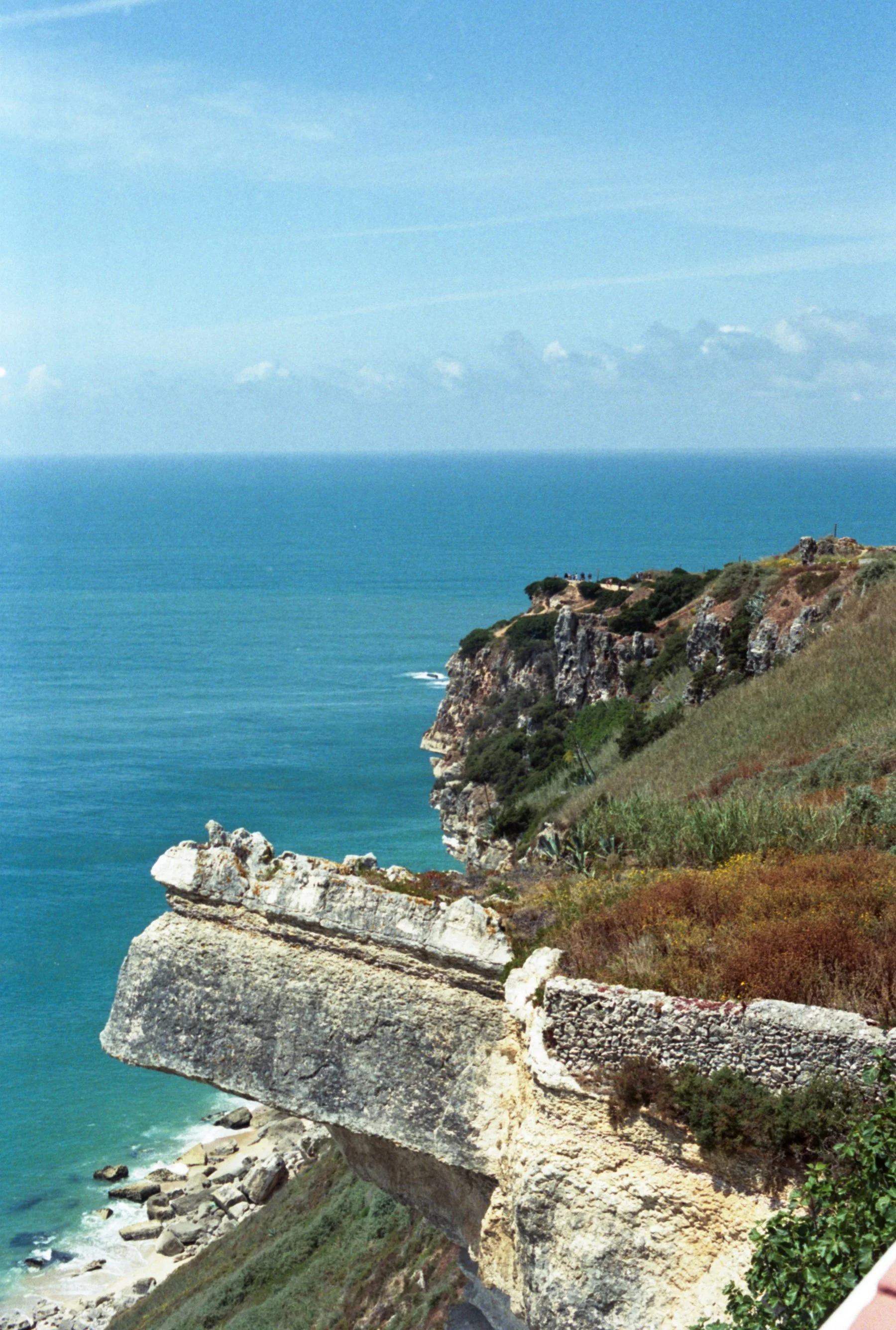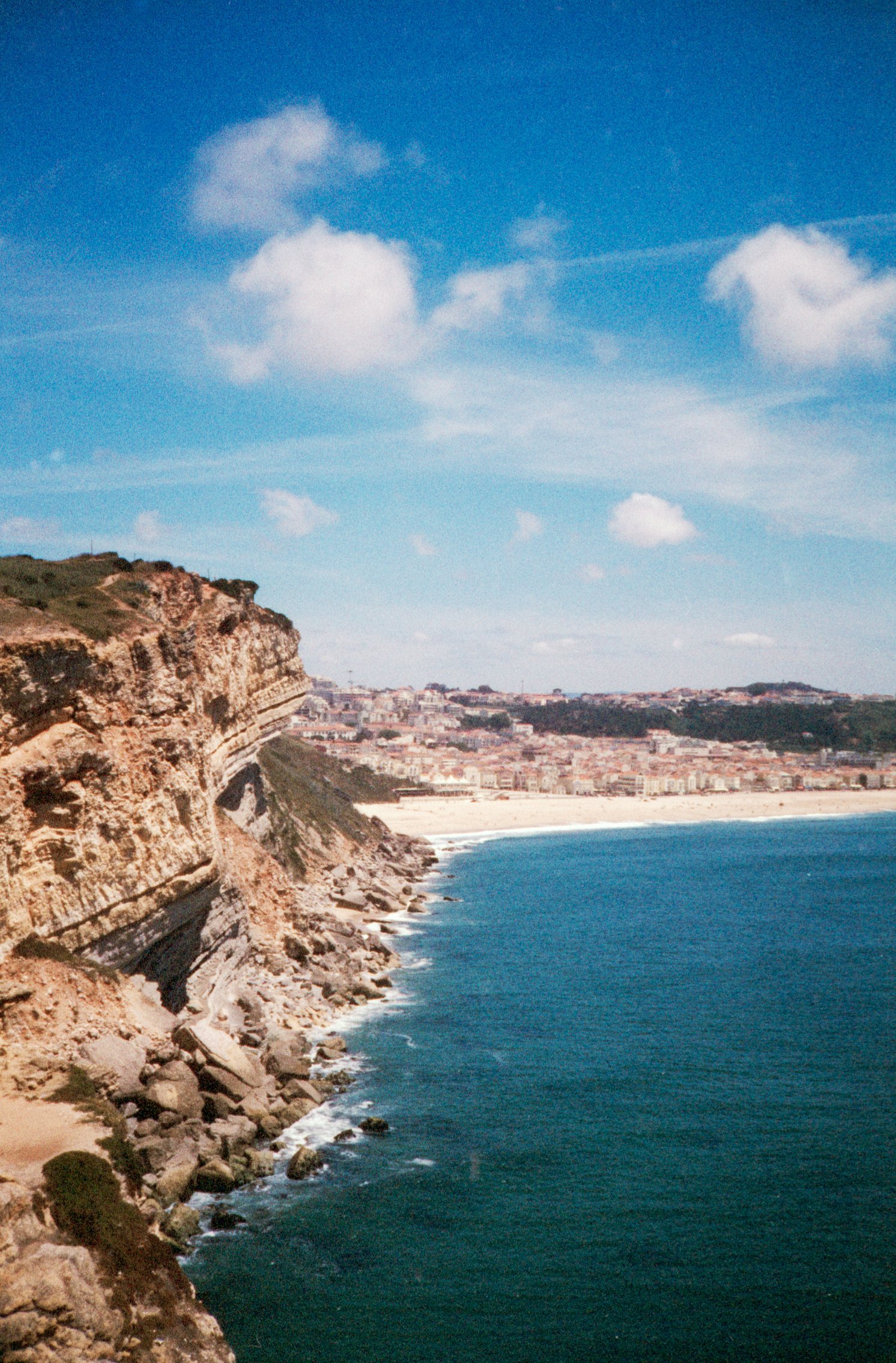I love Lomography film. I love all of it. I honestly don’t know what I’d do without them! They are the only large scale company creating unique film stock that is reliable. Maybe I’m wrong, but that’s just been my experience so far. You guys know I love Lomography LomoChrome Purple and LomoChrome Turquoise film, but I’m also equally as obsessed with their standard color film stock. The colors are incredibly vibrant and realistic, with surprisingly natural skin tones. It’s one of the most affordable film stocks out there, particularly if you buy in bulk. The only downside is that sometimes its hard to find. But when it’s available, I always stock up. I would say Lomography Color Negative film might be the film that I use the most out in the real world. When I’m shooting weddings, portraits, events… anything where I know my client doesn’t want me to get too crazy with my film stock.
I took a roll of Lomography Color Negative 35 mm ISO 400 film with me to Portugal and tried it out in my Nikon FE2. I have a full blog post and YouTube video about the Nikon FE2 because I’m obsessed with it. It’s the best 35 mm film camera that I own. The photos are absolutely stunning. I recommend the Nikon Nikkor 50 mm f/1.4 lens because it adds a level of surreality and magic to the images due to the wide aperture capabilities. I love a good 50 mm lens. There is something truly special about them. They create images that are intimate and dreamy but that don’t look too outside of reality.
I wanted to share my full roll of Lomography Color Negative 400 film that I took with my Nikon FE2 in Portugal so you can see what this film is capable of. You can also check out my YouTube video that I made from our trip to Portugal here if you’d prefer to watch rather than scroll. :) I can’t believe I almost left my Nikon FE2 at home for this trip because I was already planning on bringing so many other cameras! Thank goodness I didn’t, because these might be some of my favorite images I took on that trip. Lomography also makes this film in ISO 100 and ISO 800, but I prefer the ISO 400. :) If you’re looking for more film recommendations, make sure to check out my blog post about all of my favorite 35 mm film stocks here.
If you’re interested in trying out Lomography Color Negative ISO 400 35 mm film, here is where you can find it!
LOMOGRAPHY COLOR NEGATIVE ISO 400 35 MM FILM
AMAZON (not always in stock)
EBAY (most likely to get a good deal because people are usually selling unused stock)
If it’s out of stock on these sites, you can always check out some of the similar film stocks:
LOMOGRAPHY COLOR NEGATIVE ISO 800 35 MM FILM
LOMOGRAPHY COLOR NEGATIVE ISO 100 35 MM FILM
WHERE TO BUY A NIKON FE2
WHERE TO BUY A NIKON NIKKOR AF 50MM F1.4 D LENS
#ad #affiliate
If you found this post helpful or inspiring, I’d love it if you considered signing up for my Patreon! For as little as $1 a month, you’ll get early access to all of my YouTube videos, plus tons of photos that I don’t post anywhere else. Depending on which tier you choose, you could also receive seasonal prints and/or discounts! I always use all of the proceeds towards cameras, film & processing. Find out more here!
If you have any questions, I’m always happy to help! You can contact me here, or leave a comment below! Thanks so much for stopping by! You can also check out my Amazon storefront for more camera/film recommendations. :) Have a magical day!
<3 Myles Katherine
(click to enlarge images)
(By using the links and/or codes in this blog post it supports Myles Katherine Photography. We may get a small kick back by you doing so.)
























































































